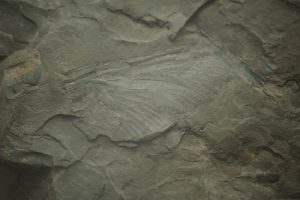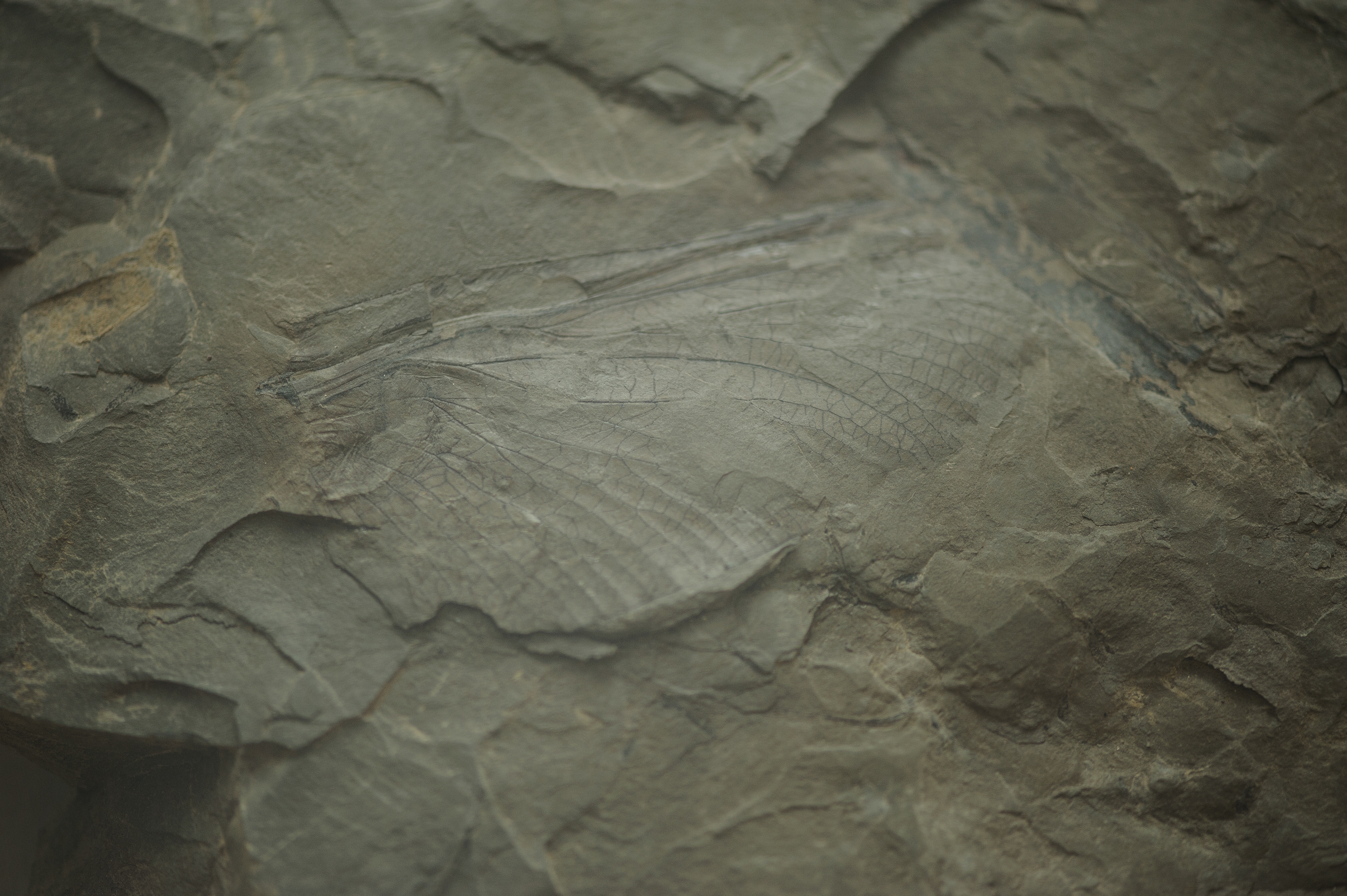
Pharciphyzelus lacefieldi was a primitive insect that lived in what is now Alabama during the Pennsylvanian period approximately 310 million years ago. Although the group of insects that Pharciphyzelus lacefieldi belonged to is no longer alive today, they can be compared to the modern mayfly. This group was characterized by beak-like mouth parts that might have been used to suck the juices from plants, and are sometimes called the “six-winged insects” for their body lobes that resemble an extra set of wings. Some types of these insects attained huge size, with wingspans reaching almost 2 feet.
Dr. Jim Lacefield, retired professor from the University of North Alabama and author of “Lost Worlds in Alabama Rocks,” found this specimen in Walker County in 1993. Subsequently, scientists from the University of Kansas described the specimen and named it after Lacefield. During the Pennsylvanian period, the region of Alabama covered by parts of Fayette, Tuscaloosa, Bibb, Jefferson and Walker counties was a large coal forest and swamp. During the extraction of coal from the region today, layers and layers of shale rock that cover the coal seams are removed and put aside in large spoil piles. These mines and shales are full of vertebrae and invertebrate footprints, fossil plants and, on rare occasions, insect wings like this one.
The Invertebrate Paleontology Collection is estimated to contain more than 20,000 lots of specimens. Specimens are mainly from the Oligocene, Eocene and Cretaceous deposits of Alabama. The Paleogene (Eocene plus Oligocene) deposits in Alabama are considered to be among the best in the world. The collection includes at least eight types of specimens and is housed in the Mary Harmon Bryant Collections Facility.
Dr. Dana Ehret, curator of paleontology for The University of Alabama Museums, provided the above information.
